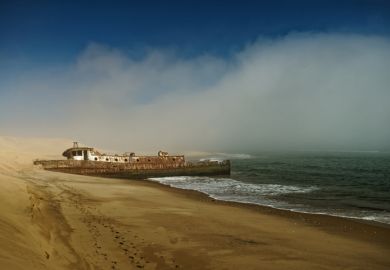A weakness of the way in which students of international economics were, in the past, taught the theory of commercial policy was that the predictions of theory were in obvious conflict with observable reality. Theory taught that import protection was, in most cases, harmful not only to exporting countries, but also to the country imposing the protection. Some vested interests might be harmed by liberalisation, but these could be compensated by groups that gained, and national economic welfare would still be higher. Why, then, were countries so reluctant to reduce, or even get rid of, import barriers?
Clearly, one answer is to be found in the political process whereby a country's commercial policy is formulated. If vested interests, drawn from the import-competing sectors of the economy, succeed in capturing the state decision-making process, import protection will be the outcome regardless of whether the nation is thereby impoverished. We need a political economy model of protection to make any sense of why countries impose welfare-reducing restrictions on trade.
Nowhere is this more true than when we wish to examine the protection applied by the advanced industrialised countries to textile and clothing products over the past 40 years. Beginning with the Short-Term Cotton Textile Arrangement of 1959 and going through to the Multi-Fibre Arrangement (MFA)signed in 1973, the developed countries of the world have applied systematic protection to their textile and clothing industries at the expense of not only some of the poorest, developing countries but also at great cost to their own consumers. Thankfully, as part of the Gatt agreement to conclude the Uruguay Round, they undertook to phase out these quotas over a 10-year period, which started on January 1 1995.
We can understand why developed countries have chosen to inflict such appalling damage on themselves and others only if we go beyond pure economic theory and examine how trade policy was determined by these countries during this period. Geoffrey Underhill's study is an excellent attempt to do just that. He begins by showing how protection was grounded in the difficulties that producers in high-wage economies faced in adjusting to changes taking place within the industry and to increased competition from abroad. This took place against a background of slower economic growth and rising unemployment in the western industrialised world.
The response of producers in different countries to this crisis varied a great deal from one country to the next. In Italy firms made great efforts to increase their competitiveness by adopting strategies of flexible specialisation and forming regional associations of producers to promote adjustment. In France, by contrast, the strategy of companies was to lobby the state authorities for increased protection. Whereas in Italy the role played by the state was to promote adjustment, in France the policy agenda was successfully "captured" by textile interests with the purpose of preventing adjustment from taking place.
In the past decade and a half, a significant change has taken place in the policy stance of the western industrialised countries in favour of a phased dismantling of the MFA. Underhill argues that the interests of producers in developed countries have altered as the industry has undergone structural change. First, production in certain branches of the industry has become more capital intensive, leaving the industry less vulnerable to competition from low-wage economies. Second, as a result of outward sourcing, production of clothing and textile products has become increasingly trans-nationalised. Both changes have rendered the MFA less relevant as a strategy for firms in these countries. In particular, outward processing has given firms power to control the terms of trade themselves rather than through the mechanism of the state.
All this demonstrates that the determinants of national commercial policy cannot be analysed in a static framework. They evolve over time as the interests of producers within protected sectors change. Economists need to study the social and political factors that underpin commercial policy in different sectors of the economy at different points in time if they want to win the argument for free trade.
Nigel Grimwade is principal lecturer in economics, South Bank University.
Industrial Crisis and the Open Economy: Politics, Global Trade and the Textile Industry in the Advanced Economies
Author - Geoffrey R. D. Underhill
ISBN - 0 333 57849 X
Publisher - Macmillan
Price - £45.00
Pages - 280



